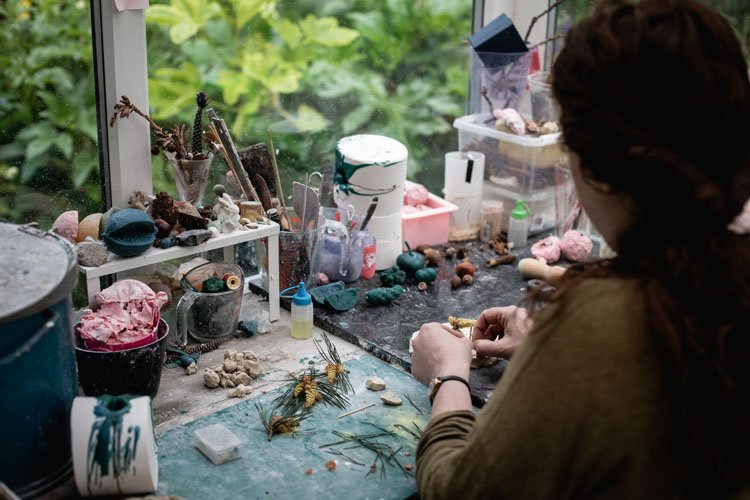Like an Alchemist
As the seasons unfold I find myself continually collecting things. I enjoy working with the alchemic and ancient properties of glass to distil nature into something else.
About Me
I live and work in Whitby and forage things on walks along the cliff paths, through parks and woodlands. I like the smell of wet grass, the pattern of pine needles on a path and the crunch of pebbles as I search for treasure on an incoming tide.
I like to work seasonally and create small collections of my unique botanical sculptures throughout the year. My work has been exhibited both here and internationally. From a collection of cast glass mushrooms in the Armitt Museum to a casket of botanical treasures in a medieval castle in Bavaria.
A limited range of small editions and unique pieces are available directly from the studio and will be released throughout the year. You can sign up for my ‘collectors’ newsletter to get a preview of new work.
It’s written for those that never return from a walk with empty pockets.
Some more about my process
-
Handmade
All my work is handmade by me in my cliff top studio in Whitby. My area of expertise is cast glass. A traditional technique used to shape glass long before the Romans invented glass blowing.
I specialise in both lost wax casting and a technique called ‘burnout’ where the resulting cast glass pieces are unique translations of the original organic specimens.
I begin the burnout process by making a mould around the botanical specimen. I can then ‘burnout’ the original in my kiln, where it becomes ash. I forage things to work with and the mould making process needs to be done as quickly as possible. It is essential to get this element right in order to capture all the details.
-
Heat
Glass is included in the second kiln firing. I fill tiny terracotta plant pots with chunks of glass. They are then carefully balanced over each individual mould.
The heat of the kiln melts the glass. In its molten state it runs through the hole in the bottom of the plant pot and down into the negative space in the mould. This process is called reservoir casting.
Casting glass in this way prevents air traps. The cooling process must be done very slowly and pieces usually take nearly a week to fire.
Using this technique is like capturing the fingerprint of nature. The alchemy takes place in the heat of the kiln. It is an intricate process fraught with disaster.
-
Gilding
I like to gild certain details with gold leaf to accentuate their beauty (like the gills on my mushrooms). Gold is a material synonymous with permanence and perfection. I was taught this process by a master gilder. He told me that when two neutron stars collide, gold is created.
Gold comes in a range of colours, from red gold to moon gold or champagne gold. It is a magical material to work with and I always use real gold leaf.
Gold size is painted on the piece and I apply the gold leaf with a gilders tip. It is cut with a gilders knife. Each sheet is very delicate and often floats about. It then needs to be burnished. The process leaves my studio table scattered with gold dust.






















